
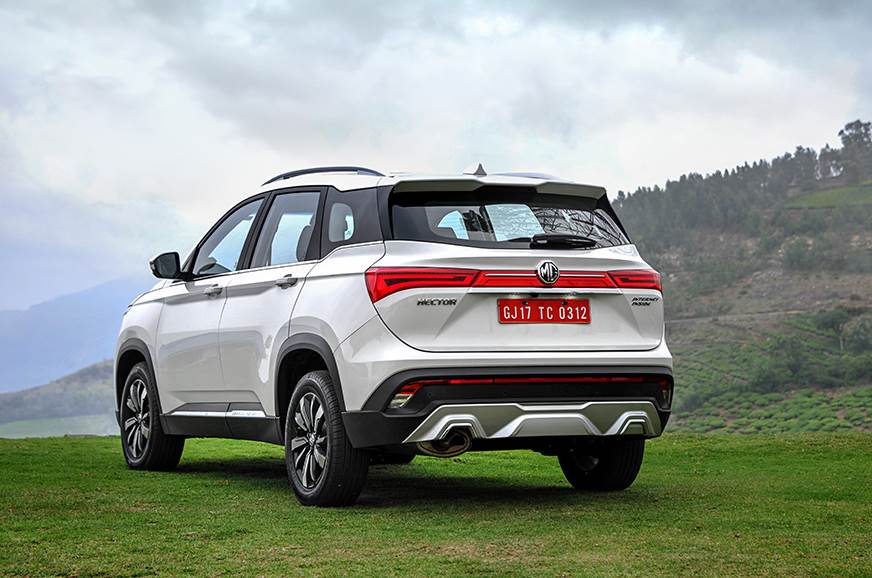
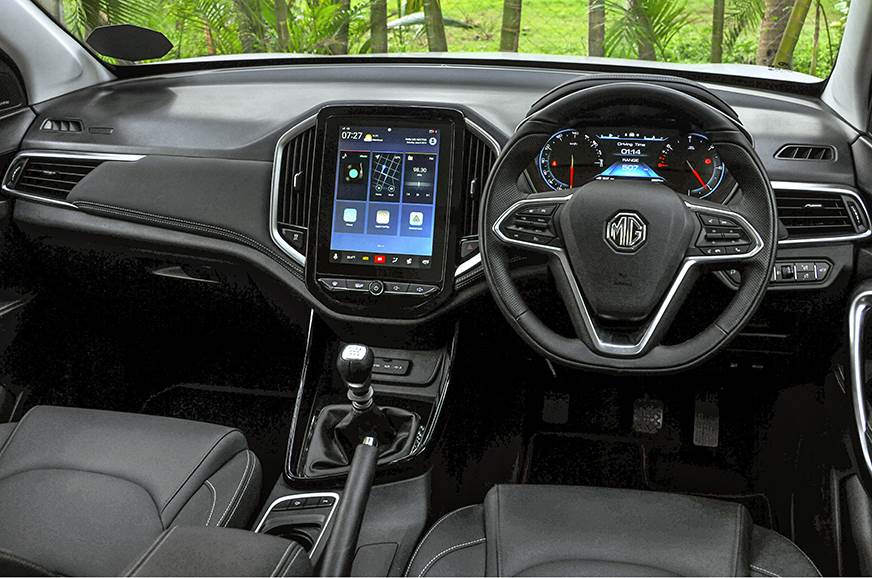

Contents
What is it?
There’s a lot riding on the MG Hector, which will be the first product from SAIC-owned MG Motor India, and the one that will define what the brand stands for. The company, however, has made sure you know what the initials ‘MG’ stand for by flaunting its full name ‘Morris Garages’ in all its communication, thus leaving you in no doubt about its British inheritance. The truth is that the Hector, which is based on the Baojun 530 from Chinese parent SAIC’s vast portfolio, is about as a British as Confucius. And, that’s no bad thing.
With the large Baojun 530 as the starting point, the Hector has an immediate size advantage over its rivals and this is pretty important in the ‘mine is bigger than yours’ one-upmanship playing out in the SUV segment. Besides, MG has thrown everything it possibly it can into the Hector to make it as upmarket and appealing as possible. In addition to the mile-long equipment list, which includes many first-in-class features, there’s no stinting on powertrains either. You get a Fiat-sourced 2.0-litre turbocharged diesel engine developing a 170hp, mated to a 6-speed manual gearbox, and a 1.5-litre turbo-petrol engine making a modest 143hp, and the option of a 6-speed manual and a 6-speed automatic transmission. There is also a petrol-hybrid version with a 48V battery, which again, is a segment first.
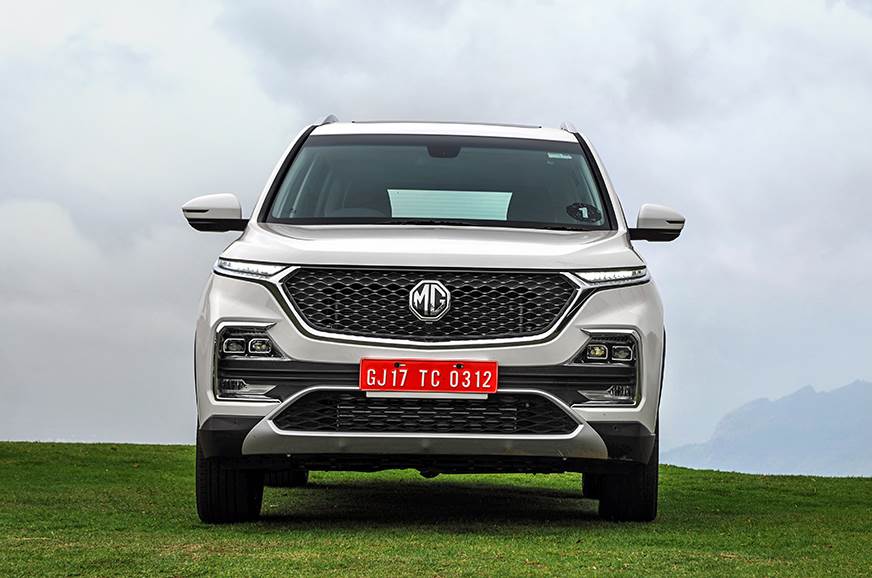
There’s no four-wheel-drive option at all, but with SUVs being used increasingly as an alternative to cars, off-road capability is not something that would greatly matter to Hector buyers.
Safety is taken care off with six airbags, the usual electronic nannies like ABS and ESP and, a segment-first, fatigue-warning alarm.
On paper, the Hector seems to tick all the important boxes. So has MG, with Confucius-like wisdom, done everything right? As the saying goes (not Confucius’), the proof of the pudding is in the eating.
What’s it like on the outside?
The Hector is certainly a head-turner and it drew quite an audience everywhere and every time we stopped for photos on the picturesque route from Coimbatore to Coonoor. The nose has lots of interesting detailing and follows the current trend where the headlight cluster is placed down at bumper level with the LED DRLs sitting above where the lights typically should be. The humongous grille, which you just can’t miss, feels a touch oversized, even on a car so big though. The blade-like DRLs further accentuate the size of the grille and look great when illuminated. There’s a good dose of chrome, of course, used liberally around the grille, and C-shaped headlight housings. The prominent air intake in the lower bumper and massive skid plate looks the part and gives the Hector serious SUV credibility.

However, what robs the Hector of a bit of its SUV-ness are the 215/60 tyres and 17-inch wheels, which have a nice, edgy design but are dwarfed by the Hector’s 4,655mm length, 1,760mm height and large overhangs. In fact, it’s from the side that you get an idea of how long the Hector is; it looks a size bigger than the Harrier and the Compass, though the proportions are not quite as balanced – the width is too narrow in relation to the length. A neat touch, which gives a bit of relief to the stretched flanks, is the neat chrome runner under the doors with ‘Morris Garages’ prominently embossed on it. Another nice detail is the way the rear glass looks ‘pinched’ by the converging kinks in the window and roof lines, and again, in keeping with the trend, the D-pillar has blackened glass for a floating roof effect.
What stands out at the rear is the overdone scuff plate and makes no bones about the Hector’s SUV pretensions. The tail-lights look Audi-eque and are connected by a good-quality reflector strip lending it a nice, premium touch.
In fact, the overall appearance of the Hector is that of a rich, upmarket-looking vehicle, dripping with chrome and one that certainly stands out from the crowd.

Move closer to the Hector and you’ll notice large and uneven panel gaps, especially around the bonnet area which points to inconsistent build quality. MG officials, however, have said that this will be tightened before the cars reach customers.
What you certainly can’t miss is the huge ‘Internet Inside’ logo on the side of the car where a ‘Turbo’ or ‘V8 badge would have once proudly sat. How times have changed!
What’s it like on the inside?
The Hector’s spacious cabin is centred around the 10.4-inch touchscreen, which is the biggest just not in its segment but also among all the cars in the entire Indian market. So let’s talk about the screen first.
Everything from infotainment to navigation, and even the air-con settings are all housed in this massive touchscreen. The only physical buttons are for the volume control, and the front and rear defoggers. The sheer size of the screen and the decent resolution makes it the easiest to read. The tabs are nice and large so you don’t have to carefully aim a finger to hit any of the menus or functions.

While the large and logically laid-out screen is easy to read, it is not quite the slickest to use. The touch response has a bit of a delay at times and tends to freeze momentarily if you rush through the functions. You can’t complain about the number of functions and apps though, which range from a 360-degree camera which offers a phenomenal view to the TomTom navigation (with real-time traffic updates) and a Gaana app, which streams music seamlessly through the impressive Infinity sound system. There’s Apple CarPlay and Android Auto, and quite frankly, as is always the case, Google Maps proved far more accurate than the in-car Tom Tom software, which on more than one occasion had no clue where we were.
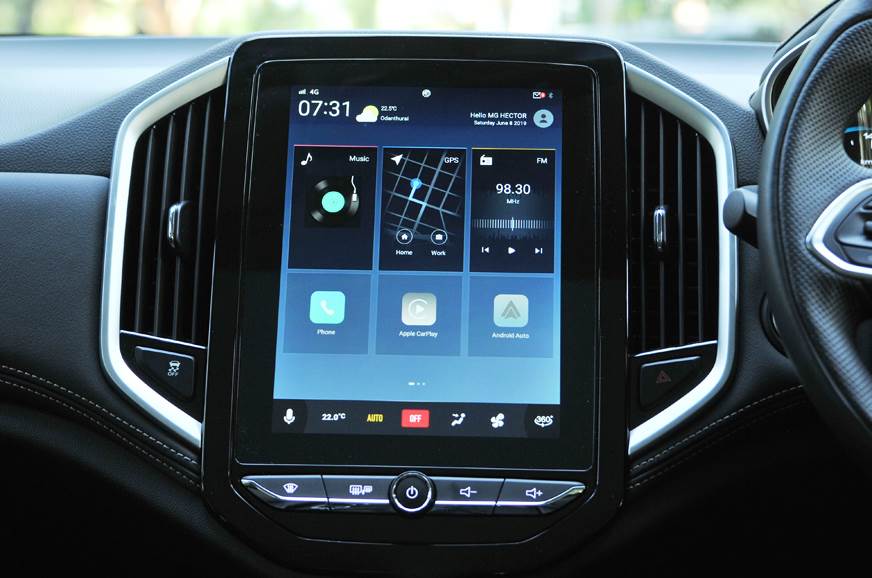
The big news, of course, is the suite of connectivity features that are available on the mid-spec Super variant. The Hyundai Venue may have stolen the thunder by being the first car in the Indian market with an embedded SIM card, but the Hector – tagged the ‘Internet Car’ by MG – offers an impressive suite of connected features as well, which will be a huge draw if at least for its novelty value.

The big advantage with a dedicated in-car SIM card is that it allows your phone to communicate with the car through MG’s iSMART app. You know where your car is at all times and can locate it with the ‘Find My Car’ function – it not only helps you spot it in a huge parking lot by setting off the hazards and horn but it also maps out a route in case you’ve parked far off. Pretty useful for absent-minded owners. And if you’re a control freak or the type who worries, you can keep a tab on where the car is, if it’s speeding or if it has strayed beyond the ‘geofenced’ boundary that can be set to a 100km radius.
Like with the Venue, you can lock and unlock the car using your phone, and with the automatic transmission, even start the car and the air-con remotely. Needless to say, for all this to work, both the car and your phone need to have a GSM network.
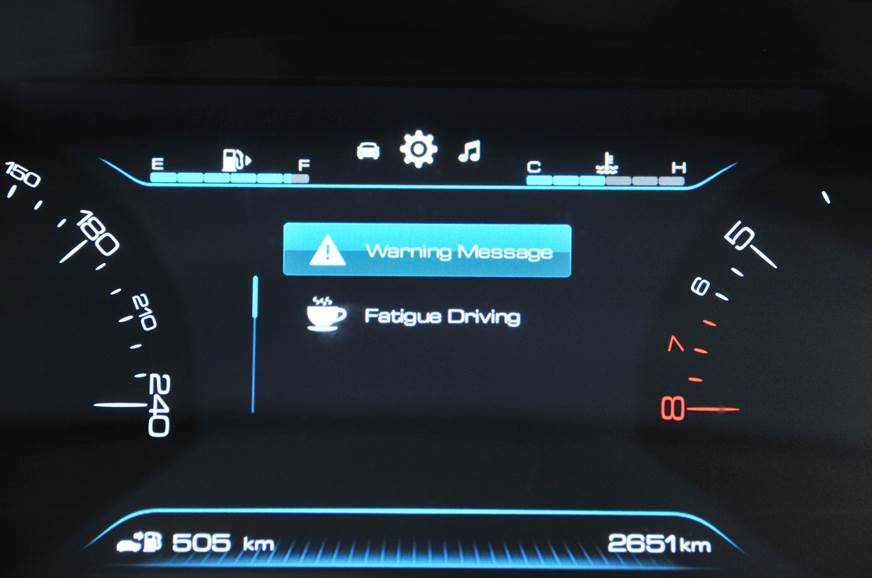
Besides the much-hyped connectivity, there’s no shortage of the usual equipment buyers have come to expect in a car of this class. You get auto headlights, cruise control, rain-sensing wipers and segment-first features like mood lighting and heated outside rear-view mirrors. There’s a decent amount of storage space inside the Hector but the door bins, cubbyholes and glove box could all have been a touch bigger. There are two USB slots up front (one is a fast charger), but what’s missing is a wireless charging pad, which you now get in the far cheaper Hyundai Venue.
The Hector’s best party trick is the voice command system that can be activated by a pleasant ‘Hello MG’ greeting. You can follow up on that with a command like ‘Please open the sunroof’, and the car does it for you. It may seem a bit gimmicky and doesn’t always recognise your voice but for some functions like navigation, it’s a lot easier (and safer) telling the car where to take you instead of tapping out the destination on the touchscreen when on the move. The same goes for the air-con temperature and fan settings. You don’t have to look at the screen, press buttons or take your eyes off the road. You merely talk to the car. And don’t forget to say ‘Please’ when you ask for something – that’s the bit of Britishness in the Hector!
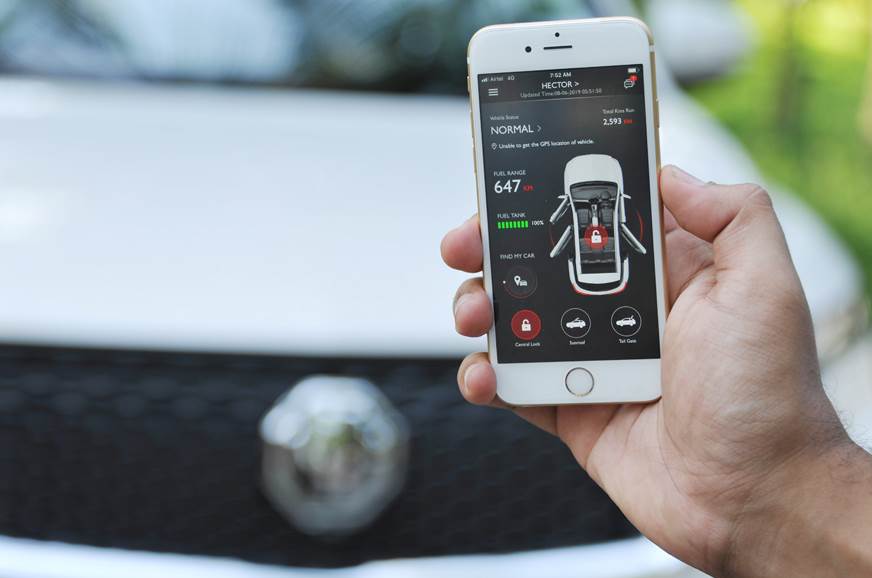
The well-appointed cabin, with its massive space and long list of features, is an inviting place and one of Hector’s strengths. The simple and logically laid-out dashboard has some soft-touch premium bits and the steering wheel too has a chunky, quality feel.
The instrument cluster is a simple design with dials that are clear and easy to read but the anti-clockwise tachometer takes a bit of getting used to. The colour MID screen is crisp and has all the information you would want, like tyre pressures, turn-by-turn navigation alerts, media information and telephone access. On the hybrid version, it also gives you battery charging information. One flaw is that the instrument cluster catches sunlight making it hard to read..

Look closely and you’ll notice a few plastics that feel hard and brittle and there are some other iffy pieces too like crinkles in the leather trim and panels that are far from flush-fitting. The overall quality falls short of Hyundai standards let alone the Europeans but, overall, the Hector’s cabin manages to convey a sense of premium-ness with its mix of materials and gizmos, making it a space that owners will be happy to sit in.
Where the Hector really aces it is in terms of sheer all-round space. Finding a comfortable driving position is easy thanks to a six-way electric driver seats and a steering that adjusts for reach and rake. The seats, however, aren’t the most comfortable. Yes, they are broad and generous for even large adults, but the lumbar support is a bit too protruding and can be an issue on long drives. Then, there is the material, which according to MG, is artificial leather but feels more like rexine and doesn’t ‘breathe.’
Over to the passenger side, you get four-way electric adjustable seats but there’s no height adjust. That said, the default setting is comfortable enough.

Get in the back and there is nothing but good news. The best-in-class wheelbase really comes into its own here giving you ample of legroom even with the front seats stretched all the way back. The headroom too is sufficient for adults over 6ft, and thanks to a completely flat floor, seating three abreast is comfortable, to say the least. You also get rear aircon vents and a fast charging socket but the highlight is arguably the massive panoramic sunroof, which along with the huge windows, elevates the feeling of space that much more. You can also recline the backrest for more comfort and that’s a huge plus.
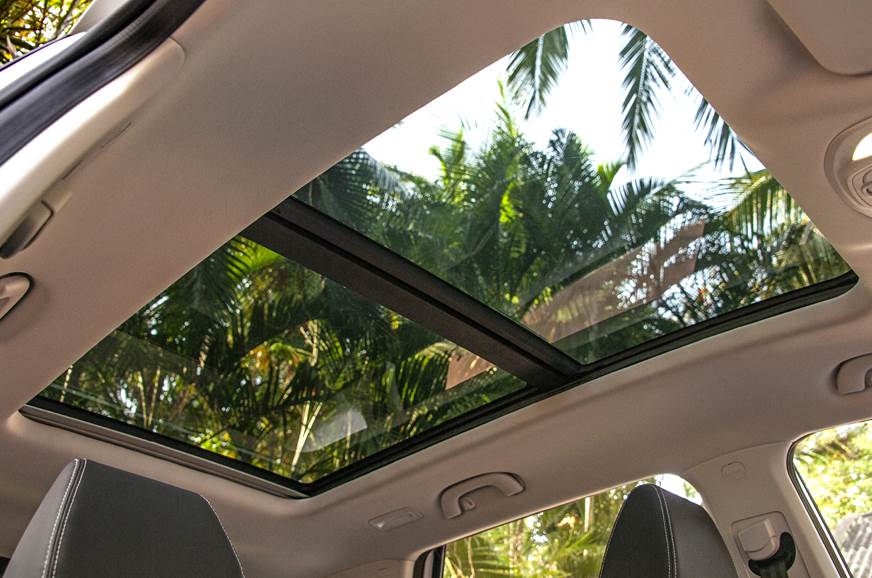
Boot space is another area where the Hector is on top. At 587 litres, it has the biggest boot but access is not the easiest because of the high loading lip. Also, the removable parcel tray makes it narrow and difficult to take stuff in and out. However, you can fold the rear seats into a 60:40 split or fold them flat, to make way for a humongous boot. And you also get an electric tailgate – one more from the Hector’s segment-exclusive list. Also, don’t bother trying to find the spare wheel under the boot. In the Hector, the full-size steel wheel is housed under the car.
What’s it like to drive?
We sampled both the diesel and petrol-hybrid models with manual transmissions. Starting with the crowd-favourite diesel engine, the first impressions are very good. What takes you by surprise is how quiet this engine is, especially at idle. The same 2.0-litre Fiat diesel is shared with Tata Harrier and Jeep Compass but it feels more refined in the Hector. Diesel clatter is remarkably subdued and it’s only when you push it to the rev limit that the diesel drone is heard. Overall cabin insulation is good and MG has done a great job in filtering out unwanted noise from the cabin.

The Hector’s 2.0-litre diesel produces 170hp and 350Nm, which are identical to the figures of the Compass. However, the way the power and torque are delivered is quite different. There’s still a fair bit of turbo lag, especially below 2,000rpm, but it’s not as pronounced as in the Compass. Also, power delivery here is more progressive unlike in the Compass, which has a solid spike in the mid-range. Hence, there is no surge in power like in the Jeep and power is developed at a relatively linear rate. The differences in power characteristics are down to engine calibration and the Hector has benefitted from the latest round of ECU tuning done to the Fiat diesel.
Again, like the Jeep, the Hector gets the same Fiat C635 6-speed manual gearbox but MG has opted for a slightly taller set of ratios in the interest of fuel efficiency, which, at 17.41kpl, is the best in class and good for relaxed highway driving. On the flat and open roads leading up to foothills of the Nilgiris, the Hector cruised quite effortlessly and had enough grunt to overtake with just a press of the right foot. You do need to drop down a gear when the revs fall, but there’s enough torque to let you stick to a higher gear. It’s in town and on the winding road up to Coonoor that you sense the tall gearing the most, and you find yourself selecting a lower gear frequently to stay in the rev band. This Fiat transmission’s idiosyncrasy of a slightly snappy clutch – which makes the car easy to stall – is carried over from the Harrier and the Compass. Similarly, clutch pedal effort too is on the heavier side but the pedal is placed a tad more to the left, which means lesser room for the dead pedal.

The 1.5-litre petrol-hybrid engine makes 143hp and 250Nm, with an extra 20Nm coming from the 48V battery housed under the passenger seat. The belt-starter generator battery is for an additional boost on acceleration and self-charging upon braking. Like the diesel, refinement on start-up is excellent and the cabin is quiet as you cruise in the city. Turbo lag at low speeds is again noticeable when you want to suddenly overtake. However, if you drive gently on part throttle, the petrol Hector gamely goes with the flow, the 48V hybrid system giving a slight shove to help you along. In fact, we were quite surprised by the user-friendly character of this engine, which works so well in the urban grind. If you are driving mainly within city limits, this engine does the job for you.
On the highway, the petrol Hector clearly doesn’t have the oomph of the diesel, and overtaking is a more relaxed process and it takes its time to build up speed. Also, the power delivery isn’t consistent with small spikes through the rev range and a distinct kick around 4,000rpm, which takes you to the rather conservative 6,000rpm rev limit. Interestingly, the tachometer on both, the petrol and diesel is redlined at 6,500pm though neither engine revs that high.
Balancing emissions, power and economy is a nightmare for calibration engineers, which is why a smooth flow of power is sometimes compromised. But again, for those unhurried outstation trips, it does the job; it’s just that you miss the strong mid-range of the diesel.
The climb to Coonoor is where the Hector petrol falls short and feels a touch underpowered, requiring pre-planned downshifts to keep the momentum going. So if your weekend breaks involve drives to hill stations, stick to the torquey diesel.

Dynamically, the Hector isn’t a driver’s car and is clearly set up for low-speed urban environments. With those long overhangs and 192mm of ground clearance, it doesn’t have off-road ambitions either. In town, the softly sprung suspension delivers a cushioned ride and that nicely soaks up broken roads and potholes. That said, sharper edges taken at speed crash through but that’s more to do with the small tyre size (which impacts the secondary ride) than the suspension itself. The Hector’s light steering isn’t exactly feelsome but it’s a boon as it makes manoeuvring this large SUV through city traffic that much easier. The outstanding 360-degree camera unit is genuinely useful when parking the Hector in tight spots.
The MG SUV has acceptable high-speed behaviour and holding triple-digit speeds is quite easy. Throw in the tall gearing and you have the makings of a good long-distance mile muncher. However, on undulating and uneven surfaces, it starts going all over the place. There’s a fair bit of body movement and the Hector doesn’t feel as tied down to the tarmac as the Compass and Harrier – both of which display far better body control. Push the Hector hard through corners and it understeers strongly, the front tyres squealing in protest. There’s lot of body roll and on a twisty road the Hector is clearly outside its comfort zone.
The brakes, however, are pretty good. The disc brakes at all four corners (which are allied to ABS and Electronic Brake Force Distribution as standard) haul down the 1.7-tonne SUV without any drama.

That said, the Hector is doesn’t like to be hustled and feels best driven a couple of notches down and at a pace that allows you to enjoy its calm and unhurried character.
Should I buy one?
The MG Hector has a lot to prove. In our market, it’s a relatively unknown upstart – a classic British brand reborn under Chinese ownership. Although prices haven’t been revealed as yet, you can expect it to be pegged between Rs 14 to 18 lakh, which makes it a good alternative to the Tata Harrier and Jeep Compass, two of its strongest competitors. What’s for sure is that the Hector doesn’t have the depth of engineering or the rugged feel of either the Compass of the Harrier but it strives to please with an approach that is quite different from the big, brawny and classic SUV appeal of its rivals. The Hector’s aim is to give you more features, space, and an easy driving experience. What customers will also like is the bold, blingy face, the acres of room in the cabin, the cushy ride, refinement and its vast (if at times gimmicky) equipment list. Only time will tell if the Hector, and indeed MG, can deliver on things like durability, service and after-sales costs, but with a wide network of showrooms and workshops in the pipeline, the company seems to be covering its bases. For now, all we have is this first impression, and boy has it been a strong one.
| MG Hector variant-wise features | ||||
| Hector Style | Hector Super | Hector Smart | Hector Sharp | |
| Front and rear disc brakes | Yes | Yes | Yes | Yes |
| ABS with EBD | Yes | Yes | Yes | Yes |
| ESP | Yes | Yes | Yes | Yes |
| Reverse parking sensors | Yes | Yes | Yes | Yes |
| Airbags | 2 | 2 | 4 | 6 |
| Isofix mounting points on second row | Yes | Yes | Yes | Yes |
| Rear camera | No | Yes | Yes | No |
| 360-degree camera | No | No | No | Yes |
| LED rear fog lamps | No | Yes | Yes | Yes |
| LED tail-lights | No | Yes | Yes | Yes |
| Roof rails | Yes | Yes | Yes | Yes |
| ORVMs with integrated LED turn indicators | Yes | Yes | Yes | Yes |
| 17-inch machined alloy wheels | No | No | Yes | Yes |
| Chrome accent on exterior cladding | No | No | Yes | Yes |
| Seat upholstery | Fabric | Fabric | Leather | Leather |
| Rear seat centre armrest with cup holders | Yes | Yes | Yes | Yes |
| Driver armrest with storage space | Yes | Yes | Yes | Yes |
| Cooled glove box | Yes | Yes | Yes | Yes |
| Rear AC vents | Yes | Yes | Yes | Yes |
| Reclining rear seat | Yes | Yes | Yes | Yes |
| 60:40 split-folding second row | Yes | Yes | Yes | Yes |
| Speakers | 4 | 4 | 4 | 4 |
| Tweeters | 0 | 2 | 4 | 4 |
| Sub-woofer | 0 | 0 | 1 | 1 |
| Fast-charging USB ports | 2 | 2 | 2 | 2 |
| Touchscreen infotainment | No | 10.4-inch | 10.4-inch | 10.4-inch |
| Android Auto/Apple CarPlay | No/No | Yes/Yes | Yes/Yes | Yes/Yes |
| Internet connectivity via SIM | No | No | Yes | Yes |
| Navigation | No | No | Yes | Yes |
| Cruise control | No | Yes | Yes | Yes |
| Tyre pressure monitor | No | No | Yes | Yes |
| Remote car operation | No | No | Yes | Yes |
| 7.0-inch MID | No | No | Yes | Yes |
| Keyless entry | No | No | Yes | Yes |
| Push button start/stop | No | No | Yes | Yes |
| 6-way electrically adjustable driver seat | No | No | Yes | Yes |
| 4-way electrically adjustable co-driver seat | No | No | No | Yes |
| Heated ORVMs | No | No | No | Yes |
| Rain-sensing wipers | No | No | No | Yes |
| Automatic headlights | No | No | No | Yes |
| Panoramic sunroof | No | No | No | Yes |
| Mood lighting in 8 colours | No | No | No | Yes |
[“source=autocarindia”]